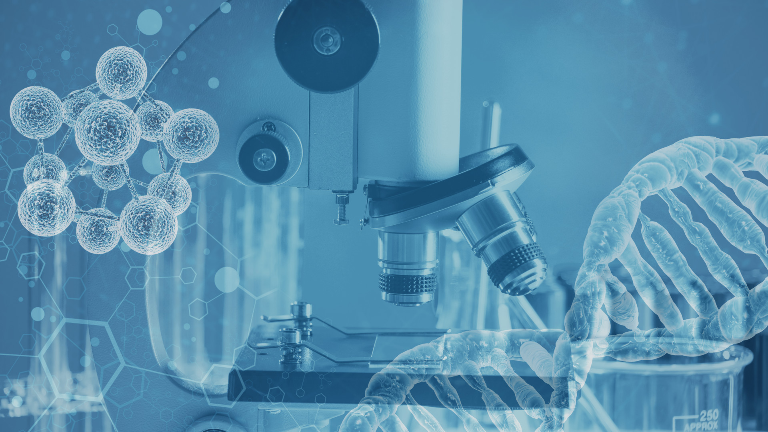预约演示
更新于:2025-05-07
PARP1 x PARP2 x TNKS1 x TNKS2
更新于:2025-05-07
关联
2
项与 PARP1 x PARP2 x TNKS1 x TNKS2 相关的药物作用机制 PARP1抑制剂 [+3] |
原研机构 |
最高研发阶段临床2期 |
首次获批国家/地区- |
首次获批日期1800-01-20 |
作用机制 PARP1抑制剂 [+3] |
在研机构- |
在研适应症- |
非在研适应症 |
最高研发阶段无进展 |
首次获批国家/地区- |
首次获批日期1800-01-20 |
7
项与 PARP1 x PARP2 x TNKS1 x TNKS2 相关的临床试验NCT05571969
A Phase Ib, Open Label, Multicenter Study to Determine the Maximum Tolerated Dose (MTD) of PARPi 2X-121 Monotherapy and the MTD of Dovitinib in Combination With 2X-121 in Patients With Advanced Solid Tumors
This is a Phase Ib, two-part, multi-center study. In Part 1, the study will evaluate the safety and tolerability, antitumor activity, pharmacokinetics, and determine the maximum tolerated dose (MTD) of 2X-121 monotherapy (at BID regimen) in patients with advanced solid tumors. In Part 2, the study will evaluate safety and tolerability, antitumor activity, pharmacokinetics and determine the MTD of dovitinib when given in combination with the MTD of 2X-121 determined in Part 1.
开始日期2023-02-20 |
申办/合作机构 |
NCT03878849
Phase II, Prospective Open Label, Single Arm Study to Investigate Anti-tumor Effect and Tolerability of 2X-121 in Patients With Advanced Ovarian Cancer Selected by the 2X-121 DRP®
This study is to be performed as an open label, multicenter, single arm study of 2X-121 to evaluate anti-tumor efficacy of 2X-121 as single agent therapy in a 28-days cycle in advanced ovarian cancer patients. 2X-121 will be supplied for oral administration twice daily as 600 mg (3 x 200 mg) capsules in a 28 days cycle. Patients with predicted high likelihood of responding to the drug (2X-121) using drug response prediction (DRP®), will be included in the study.
开始日期2019-04-15 |
申办/合作机构 |
100 项与 PARP1 x PARP2 x TNKS1 x TNKS2 相关的临床结果
登录后查看更多信息
100 项与 PARP1 x PARP2 x TNKS1 x TNKS2 相关的转化医学
登录后查看更多信息
0 项与 PARP1 x PARP2 x TNKS1 x TNKS2 相关的专利(医药)
登录后查看更多信息
15
项与 PARP1 x PARP2 x TNKS1 x TNKS2 相关的文献(医药)2022-04-01·Cellular and Molecular Life Sciences2区 · 生物学
Functions of ADP-ribose transferases in the maintenance of telomere integrity
2区 · 生物学
Review
作者: Fouquerel, Elise ; Laspata, Natalie ; Muoio, Daniela
2020-03-01·Genes & Development1区 · 生物学
Nuclear PARPs and genome integrity
1区 · 生物学
Review
作者: Smith, Susan ; Azarm, Kameron
2020-01-01·Cellular and Molecular Life Sciences2区 · 生物学
Poly(ADP-ribose) polymerase enzymes and the maintenance of genome integrity
2区 · 生物学
Review
作者: Pascal, John M ; Eisemann, Travis
5
项与 PARP1 x PARP2 x TNKS1 x TNKS2 相关的新闻(医药)2025-02-22
·医药观澜
▎药明康德内容团队报道
根据中国国家药监局药品审评中心(CDE)官网以及公开资料梳理,本周(2月17日~2月22日),有11款1类创新药首次在中国获得临床试验默示许可(IND)。通过梳理,这些产品包括了小分子、分子胶、抗体、间充质样细胞治疗产品、NK细胞治疗药物等类型。本文将根据公开资料介绍这些产品的基本信息。
图片来源:123RF
辉瑞(Pfizer):PF-07934040片
作用机制:泛KRAS抑制剂
适应症:携带KRAS突变的晚期实体瘤
辉瑞申报的1类新药PF-07934040片获批临床,拟开发治疗携带KRAS突变的晚期实体瘤。根据辉瑞公司公开资料,这是一款在研泛KRAS抑制剂,正在国际范围内开展1期临床。在发现KRAS G12C抑制剂之后,目前科学家们已经将目标转向其它KRAS突变体,旨在开发出能够靶向多种、甚至全部KRAS突变体的泛KRAS(pan-KRAS)靶向疗法,为携带KRAS突变的诸多癌症类型提供治疗选择。
轩竹生物:XZP-7797-H1
作用机制:PARP1抑制剂
适应症:实体瘤
轩竹生物申报的1类新药XZP-7797-H1获批临床,拟用于实体瘤的治疗。公开资料显示,XZP-7797是一款有效的、选择性的、能穿透血脑屏障的PARP1抑制剂。在生化分析中,该产品对PARP1的选择性超过PARP2和PARP家族其他成员(包括PARP3、PARP5a、PARP5b和PARP6)的1000倍。临床前研究表明,XZP-7797在BRCA1突变体乳腺癌异种移植模型中显示出剂量依赖性的快速肿瘤消退,在胰腺癌异种移植模型中也能显著抑制肿瘤生长。
海普瑞药业:注射用H1710
作用机制:乙酰肝素酶抑制剂
适应症:晚期实体瘤
海普瑞药业申报的1类新药注射用H1710获批临床,拟开发治疗晚期实体瘤。根据海普瑞新闻稿介绍,这是该公司研发的靶向乙酰肝素酶(HPA)的创新候选药物,其与硫酸乙酰肝素蛋白聚糖或硫酸乙酰肝素竞争性地结合乙酰肝素酶。乙酰肝素酶在多种恶性肿瘤中高表达,并且与肿瘤的生长和转移密切相关。研究表明,靶向乙酰肝素酶是治疗肿瘤的一种新的抑癌策略。
蒽恺赛生物:NKC007细胞注射液
作用机制:非基因改造NK细胞产品
适应症:复发/难治性急性髓系白血病
蒽恺赛生物1类新药NKC007细胞注射液获批临床,拟开发治疗复发/难治性急性髓系白血病。根据蒽恺赛生物新闻稿介绍,这是其自主研发的同种异体外周血来源的非基因改造NK细胞产品。蒽恺赛生物于2021年成立,是聚焦细胞与基因治疗的创新型生物医药公司,专注于开发针对癌症、感染性疾病和自身免疫性疾病的细胞治疗产品。
中盛溯源生物:NCR101注射液
作用机制:iPSC来源的基因修饰间充质样细胞(MSC)
适应症:间质性肺病
中盛溯源生物申报的NCR101注射液获批临床,拟用于治疗间质性肺病(ILD)。根据中盛溯源新闻稿介绍,NCR101是一款诱导多能干细胞(iPSC)来源的基因修饰间充质样细胞(iMSC)治疗产品。iPSC具备无限扩增的能力,可为现货型细胞治疗产品提供稳定且无限的种子细胞来源。NCR101作为iMSC产品,不仅能够实现规模化生产,还可以确保不同批次间iMSC的高度同质性。此外,该产品利用iPSC易于基因工程化改造的特性,通过基因修饰技术进一步增强了iMSC疗效,有望为ILD治疗提供更多可能性。
维泰瑞隆:SIR2501片
作用机制:化药新药
适应症:肌萎缩侧索硬化(ALS)
维泰瑞隆申报的1类新药SIR2501片获批临床,拟开发治疗肌萎缩侧索硬化症(ALS,又称“渐冻症”)。该产品的具体作用机制尚未公示。维泰瑞隆创立于2017年,创始人王晓东院士和张志远博士。该公司致力于开发能够从根本上解决衰老相关退行性疾病的变革性疗法,聚焦于衰老相关退行性疾病的致病机理,包括细胞程序性死亡,神经保护性通路、神经炎症等。
箕星药业:注射用JX10
作用机制:纤溶酶原调节剂
适应症:急性缺血性卒中
箕星药业申报的1类新药注射用JX10获批临床,拟开发治疗急性缺血性卒中。公开资料显示,JX10(曾用名:BIIB131)是一款纤溶酶原调节剂,为具有抗炎特性的新型溶栓药物。箕星药业从渤健(Biogen)收购该产品并进行全球临床开发的项目。该药的作用机制包括溶栓和抗炎,它可通过恢复急性中风后的临界血流量,延长原本短暂的治疗窗口期,即发病后4.5小时内,使更多患者可以从目前的标准治疗中获益。本次这款产品获批的是一项全球注册性临床试验ORION,将研究JX10在治疗从“最后已知正常时间(last known well)”起4.5小时至24小时时间窗内就医的急性缺血性脑卒中(AIS)患者的功能恢复作用。
默沙东、第一三共:注射用MK-6070
作用机制:靶向DLL3的三特异性T细胞接合器
适应症:小细胞肺癌
默沙东(MSD)申报的1类新药注射用MK-6070获批临床,拟开发治疗小细胞肺癌。MK-6070(曾用名:HPN328)是一种靶向DLL3的三特异性T细胞接合器,目前第一三共(Daiichi Sankyo)和默沙东正在全球范围内开发该产品。该产品包含3个结合域,用于引导T细胞杀死表达DLL3的癌细胞,包括抗DLL3用于靶向结合,抗CD3用于T细胞结合,抗白蛋白用于延长半衰期。
Pharvaris:deucrictibant缓释片
作用机制:缓激肽B2受体拮抗剂
适应症:遗传性血管性水肿
Pharvaris公司申报的1类新药deucrictibant缓释片获批临床,拟定适应症为遗传性血管性水肿(HAE)。公开资料显示,这是缓激肽B2受体的一种强效、选择性的口服拮抗剂,目前正在国际范围内开展3期临床研究。在HAE中,缓激肽B2受体的拮抗作用是一种耐受性良好、已被临床证实的作用机制。通过抑制缓激肽信号传导,deucrictibant有可能治疗HAE发作的临床体征并预防发作的发生。
华奥泰生物、华博生物:HB0056注射液
作用机制:靶向TSLP和IL-11双抗
适应症:中重度哮喘
华奥泰生物和华博生物共同申报的1类新药HB0056注射液获批临床,拟开发治疗中重度徐哮喘。HB0056是一款同时靶向TSLP和IL-11的双特异性抗体,它能同时阻断IL-11与TSLP信号通路,抑制其生物学活性。同时,该产品可抑制MRC-5细胞(人胚肺成纤维细胞)纤维化相关基因的表达,并在研究过程中体现出双靶点协同增效的作用潜力。该产品此前已经于2024年底在新西兰获批临床。
嘉越医药:JYP0015片
作用机制:泛RAS抑制剂
适应症:RAS突变的实体瘤和血液瘤
嘉越医药申报的1类新药JYP0015片获批临床,拟开发治疗RAS突变的血液瘤、RAS突变的的实体瘤。公开资料显示,JYP0015是一款泛RAS抑制剂,为一款分子胶产品,它可以通过形成RAS-亲环蛋白A蛋白复合物来阻止RAS介导的信号传导。2024年5月,嘉越医药已经与ERASCA公司达成一项全球独家授权协议,将JYP0015在中国内地和香港、澳门地区之外的全球独家研究、开发和商业化权利授予后者,该项协议的总金额达3.45亿美元。
期待这些新药后续临床开发顺利,早日造福患者。
参考资料:
[1]中国国家药监局药品审评中心(CDE)官网. Retrieved Feb 22,2025, From https://www.cde.org.cn/main/xxgk/listpage/4b5255eb0a84820cef4ca3e8b6bbe20c
[2]各公司官网及公开资料
本文来自药明康德内容团队,欢迎个人转发至朋友圈,谢绝媒体或机构未经授权以任何形式转载至其他平台。转载授权或其他合作需求,请联系wuxi_media@wuxiapptec.com。
免责声明:药明康德内容团队专注介绍全球生物医药健康研究进展。本文仅作信息交流之目的,文中观点不代表药明康德立场,亦不代表药明康德支持或反对文中观点。本文也不是治疗方案推荐。如需获得治疗方案指导,请前往正规医院就诊。
临床申请细胞疗法临床1期临床2期基因疗法
2024-03-11
·精准药物
2024年3月8日,杭州师范大学叶向阳/谢恬团队在Journal of Medicinal
Chemistry在线发表了题为“Design,
Synthesis, and Structure–Activity Relationship of Novel Pyridazinone-Based
PARP7/HDACs Dual Inhibitors for Elucidating the Relationship between Antitumor
Immunity and HDACs Inhibition”的文章。该团队开发了一系列基于哒嗪酮的PARP7/HDACs双重抑制剂,其中化合物9l具有强效的PARP7/HDACs双重抑制活性,在体内外均表现出优异的抗肿瘤能力。组蛋白去乙酰化酶(HDACs)在染色体结构和基因表达调控中发挥着重要作用,对肿瘤细胞分化、增殖和免疫调节等过程具有许多影响,已被验证为抗肿瘤的重要靶点,目前已有五种药物(1-5)获得上市批准(图1)。聚[二磷酸腺苷(ADP)-核糖]聚合酶7(PARP7)是PARPs家族中单PARP亚家族的成员之一,能使自身和其他底物蛋白发生MARylate反应,即催化单个ADP-核糖(MAR)从烟酰胺腺嘌呤二核苷酸(NAD)共价转移到其底物上。PARP7被证实通过抑制IFN-I信号转导参与细胞膜NA感应和多种病毒RNA感染。抑制PARP7能以免疫细胞依赖的方式诱导肿瘤细胞的IFN-I信号转导,从而导致肿瘤细胞死亡,使得PARP7成为一个极具吸引力的治疗靶点。Atamparib(RBN-2397,图1)是一种口服可用的PARP7选择性抑制剂(IC50< 3 nM),目前正在进行2期临床试验。BN-2397通过激活IFN-I信号通路抑制肿瘤免疫逃逸,从而抑制胰腺癌、卵巢癌、非小细胞肺等多种实体瘤的肿瘤生长。开发同时靶向HDACs和PARP7实现协同抗肿瘤作用具有重要意义。图1 HDACs抑制剂和PARP7抑制剂RBN-2397的结构。基于RBN-2397的双重抑制剂设计作者对临床候选药物RBN-2397与PARP7蛋白的共晶结构进行分析,发现其嘧啶环上的氮与ASP580形成氢键作用;哒嗪酮基团在NAD亚口袋中充当NAD模拟结合,并与PARP7蛋白的残基GLY565、GLN576和SER604形成氢键;哌嗪上的羰基和TYR596形成重要的氢键(图2A)。此外,嘧啶环上的CF3与GLY573形成额外的氢键作用,但其对PARP7活性并不重要。为了能容纳HDACs抑制剂的药效团(异羟肟酸),设计将异羟肟酸取代RBN-2397嘧啶环上的可修饰基团CF3,合成了化合物7具有HDAC1(IC50 = 34.0 nM)、HDAC6(IC50 = 83.7 nM)和PARP7(IC50 = 2.7 nM)的抑制作用(图2B)。图2 (A)RBN-2397与PARP7蛋白共晶结构中的相互作用;(B)第一种PARP7/HDACs双重抑制剂化合物7的结构;(C)化合物7与PARP7蛋白的相互作用;(D)化合物7与PARP7催化结构域结合的表面图;(E)BN-2397(绿色)和化合物7(蓝色)在PARP7中的叠加。随后,作者在此基础上进行异羟肟酸和哒嗪酮支架之间的片段Y和R1的结构改造(图3A),以进一步提升对PARP7、HDAC1和HDAC6的抑制活性。但化合物8a-8g的效力并没有显著提升。接着,作者保留了化合物7的Y和R1区域,在嘧啶环和异羟肟酸之间插入不同长度和类型的linker以提高对HDACs的抑制活性(图3B)。在将linker从具有酰胺官能团的直烷基链、吡唑基烷基链和苄氧基替换为烯丙基苄基后,得到活性最好的化合物9l(对PARP7、HDAC1和HDAC6的IC50分别为3.1 nM、35.0 nM和6.4 nM)。图3 PARP7/HDACs双重抑制剂8和9的设计。在体外细胞活性测试中,化合物9l对NCI-H1373和MV-4-11两种细胞系均显示出优异的抑制活性(≥ 99% at 10 μM,图4),比RBN-2397和SAHA效力更强。且与RBN-2397相比,化合物9l对MV-4-11和U937两种血液肿瘤细胞株显示出更强的抑制活性,与SAHA相比,活性略好。在对PARP7缺乏敏感性的NCI-2066细胞系中,化合物9l显示出比RBN-2397更强的抗细胞增殖活性。图4 PARP7/HDACs双重抑制剂的抗增殖活性测试。化合物9l可恢复IFN-β的产生和组蛋白H3的乙酰化研究表明,HDACs抑制剂,尤其是在用SAHA处理的细胞中,会降低磷酸化STAT1的水平和干扰素刺激基因的表达。作者以RBN-2397作为对照,在用固定浓度为1 μM的RBN-2397处理的NCI-H1373细胞中,加入不同浓度的SAHA显示,SAHA的增加会降低STAT1的磷酸化水平(在SAHA的最高浓度下,磷酸化可完全被抑制),而H3的乙酰化水平则不受影响(图5A)。化合物9l能显著提高p-STAT1和乙酰化H3的水平,而9h对p-STAT1水平没有影响(图 5B)。图5 (A)HDACi对PARP7i(RBN-2397)诱导p-STAT1水平的影响;(B)RBN-2397和SAHA组合以及不同浓度的9h和9l对Ac-H3和p-STAT1水平的影响。进一步的实验发现,随着9l浓度的增加,STAT1磷酸化水平、H3乙酰化水平和微管蛋白乙酰化水平逐渐升高(图6)。化合物9l通过同时抑制PARP7和HDACs可导致H3乙酰化水平升高,IFN-β和CXCL10的mRNA表达水平升高。这些发现意味着化合物9h只抑制组蛋白去乙酰化酶的活性,而化合物9l则具有同时抑制PARP7和HDAC的能力。图6 化合物对IFN-β和CXCL10表达水平的影响以及化合物对p-STAT1水平、Ac-H3和Ac-Tubulin的影响。化合物9l对PARPs和HDACs的选择性探究化合物9l具有强效的PARP7和HDAC6抑制活性,并且相比HDAC1,对HDAC6具有一定程度的选择性。化合物9l具有与SAHA相似的选择性,它对HDAC6的抑制活性(IC50 = 6.4 nM)略好于HDAC1-3(IC50 = 30~35 nM);对HDAC8的活性较低,对HDAC11的活性最差(图7)。在对PARP同工酶的抑制活性中,化合物9l与RBN-2397具有相似的选择性。它对PARP7和PARP2的活性水平相同,但对PARP1、PARP5A和PARP5B的活性略高。图7 化合物9l对HDACs和PARPs的抑制活性。化合物9l的体内活性探究化合物9l以5 mg/kg的剂量通过静脉注射(iv)途径给药。结果显示,该化合物的清除率高达94.2 mL/min/kg,半衰期(t1/2)为13.3 h(表 8A)。口服10 mg/kg剂量的9l表现出极低的血浆暴露量,导致口服生物利用度较低(%F低至2.4%)。初步的PK评估表明,在异种移植小鼠模式的体内抗癌疗效概念验证(POC)研究中,口服给药是首选的给药途径。在BALB/c裸鼠CT26异种移植模型中,腹腔给药治疗17天,能明显减少肿瘤的生长(图8B、C)。当给药剂量为75 mg/kg时,9l的抗肿瘤效果最好,对肿瘤生长的抑制作用高于SAHA(50 mg/kg)和RBN-2397(50 mg/kg)。此外,实验小鼠均未出现体重明显减轻等副作用。图8 (A)化合物9l的PK表征;(B、C)在CT26荷瘤小鼠体内的抗肿瘤作用。总结在本研究中,作者首次设计并合成了一系列新型PARP7/HDACs双重抑制剂。在这些新化合物中,化合物9l对PARP7和HDACs在酶水平上都有很强的抑制活性。为了揭示同时在分子水平上靶向PARP7和HDACs能否产生协同药理作用,研究人员对化合物9l进行了一系列体外和体内实验。结果表明,同时靶向PARP7和HDACs可能无法实现协同抗癌效果,因为这两种途径的作用会相互抵消。不过,先导物9l是有史以来首次报道的PARP7/HDACs双重抑制剂,可作为进一步生物学研究的分子工具。原文链接:https://pubs.acs.org/doi/10.1021/acs.jmedchem.4c00090声明:发表/转载本文仅仅是出于传播信息的需要,并不意味着代表本公众号观点或证实其内容的真实性。据此内容作出的任何判断,后果自负。若有侵权,告知必删!长按关注本公众号 粉丝群/投稿/授权/广告等请联系公众号助手 觉得本文好看,请点这里↓
临床1期临床2期上市批准
2023-03-28
2022年,全球PARP抑制剂市场超过55.1亿美元。对治疗癌症以及其他慢性疾病的先进靶向疗法的需求激增,正在促进市场的增长。根据未来市场洞察(FMI),PARP抑制剂市场的需求预计将超过84.3亿美元,在2022-2026年预测期内以11.2%的惊人复合年增长率增长。奥拉帕尼仍将是全球市场上最受欢迎的药物,到2022年占PARP抑制剂销售额的62.9%以上。FMI指出,PARP抑制剂估计占全球细胞毒性药物市场收入份额的28.5%以上。
PARP7继续内卷
阿斯利康作为PARP赛道的老大哥,自然不会错过这一巨大市场,根据智慧芽新药情报库,奥拉帕利的化合物专利在2024年3月到期,用途专利在2024年11月到期。阿斯利康为构筑护城河,开发了高选择性的PARP1抑制剂AZD5305和AZD9574(入脑)。PARP酶家族亚型众多,下一代抑制剂主要针对其家族的各个亚型,同时开发新适应症(脑转移癌症、自免疾病等)。
PARP7是一种聚腺苷二磷酸核糖聚合酶,它催化adp-核糖的单个单位转移到底物上以改变其功能。PARP7是肿瘤细胞核酸感知的负调控因子。抑制PARP7在肿瘤模型中可恢复I型干扰素(IFN)信号通路对核酸的响应。恢复信号可以直接抑制细胞增殖和激活免疫系统,这两者都有助于肿瘤的消退。
临床前成功的POC,以及通路已经验证过了成药性,让PARP7成为一个颇具吸引力的靶点。AZ最早关注到PARP7抑制剂的成药潜力。在智慧芽专利数据库搜索到的最早一篇PARP7抑制剂的专利来自AZ的WO2016116602 (A1),优先权日为2015年1月,但PCT并未进入具体国家。
RBN2397结构公布加剧国内公司内卷
如图2,Ribon Therapeutics以AZ的化合物为先导,设计的分子基于吡啶嗪酮核,之前通过片段筛选被确定为主要抑制monoARTs的优势结构,并用于获得PARP酶的NAD+竞争性探针,保留了哌啶酰胺的linker,继续结构优化得到RBN2397。来看一下时间线,2019.9.4,Ribon Therapeutics启动RBN-2397的一期临床研究;2019.11.7,Ribon Therapeutics的PARP7抑制剂专利公开(WO2019212937);2020.4.28,Ribon Therapeutics在AACR会议上披露RBN-2397临床前数据,并在poster中公布其结构;国内公司也同时开启了fast follow。在智慧芽新药情报数据库搜索PARP7,可以看到众多国内公司已经纷纷参与到PARP7抑制剂的开发中。如成都百裕、南京明德、诺沃斯达、加科思、海思科、杭州英创、齐鲁、英硒智能、轩竹、誉祥、上海优理惠生、武汉人福、重庆财富生物等十几家公司,成都百裕follow的最快,其PARP7专利的最早优先权日为2020.11.27。令人奇怪的是,并未看到国外公司follow的专利公开。至于AZ为何没有推进PARP7项目,可能和市场前景关系较大,奥拉帕尼仍是全球市场上最受欢迎的PARP抑制剂药物,到2022年占PARP抑制剂销售额的62.9%以上,AZ也有奥拉帕利的迭代产品在开发中。
RBN2397的临床前景如何?
RBN-2397先进行了单药临床研究,爬坡阶段中,纳入50例患者;通过剂量方案和相对生物利用度评估测试了25毫克至500毫克的BID给药,最常见的肿瘤类型为乳腺(n=8)、肺部(n=7)和结肠(n=5)。二期推荐(RP2D)的剂量为200 mg BID,与微粉片剂一起连续给药。剂量扩大阶段中,入组患者53例;SCCL(22例)、HNSCC(17例)、HR+乳腺(14例);RBN-2397在RP2D具有良好的耐受性,在观察到的暴露下具有生物和抗肿瘤活性。
单药RBN-2397具有良好的安全性和耐受性,具体表现在以下几点。只有5例(4.9%)发生了与治疗相关的急性肺泡损伤;28例(27.2%)发生了不良事件导致的治疗中断;12例(11.7%)患者因不良事件中断治疗。与已批准的PARP1/2抑制剂相比,血液学毒性发生率较低。
总体看来,RBN-2397耐受性良好,大多数AE为轻度至中度,并且在剂量递增和扩大队列研究中,初步观察到抗肿瘤活性,剂量递增:HR+乳腺癌患者1例PR,13例SD且临床获益> 4个月;扩大剂量:1例HNSCC病人缓解, 4例SD,且临床获益> 4个月。在所有评估的基线活检中均可见PARP7表达,与基质细胞相比,肿瘤细胞中PARP7表达更高。
在大多数肿瘤类型的扩展队列患者中,CD8+T细胞和/或颗粒酶B表达增加,表明RBN-2397治疗后存在适应性免疫诱导,RBN-2397诱导肿瘤特异性IFN通路激活并增加免疫细胞浸润到患者肿瘤,为诱导适应性免疫反应提供了证据。这些数据证实了PARP7作为一种新的抗癌治疗靶点,并证实了RBN-2397的机制。支持了正在进行的RBN-2397联合派姆单抗(NCT05127590)和纳武利尤单抗(jRCT2031210373)的临床试验。
PARP其他亚型仍具有巨大的潜力
已有17个PARP成员被报道,其中16个具有PARP催化活性。如图4所示,根据催化功能的不同,PARPs又分为多聚PARPs (PARP1、PARP2、PARP5a、PARP5b)、单ADP-核糖转移酶(PARP3、PARP4、PARP6−PARP12、PARP14−PARP16)和无催化活性的PARPs (PARP13)。其中,ADP-核糖转移酶在细胞增殖、代谢与凋亡、细胞周期调控、免疫应答等方面发挥重要作用。
除了PARP1的作用外,TNKS1−2目前正在作为癌症的潜在治疗靶点进行研究,这主要是因为它们在控制Wnt/β- catenin信号通路方面的作用。TNKS1−2通过PARylation和靶向蛋白进行蛋白酶体降解来控制蛋白质复合物和蛋白质稳定性。在Wnt/β-catenin信号通路中,它们控制所谓的“β-catenin破坏复合体”,由轴蛋白、酪蛋白激酶1、腺瘤性大肠息肉病(APC)、糖原合成酶激酶3 GSK3和蛋白磷酸酶2A组成。TNKS抑制剂可用于治疗一系列癌症,包括结肠癌、肺癌、肝癌、卵巢癌、脑癌。
如图5,已经开发了几种TNKS抑制剂,如化合物E744969和STP100270(结构未公开),这些化合物已在临床研究中取得进展,即使化合物E7449表现为TNKS1−2和PARP1−2的双重抑制剂。其他TNKS抑制剂,如RK287107和OM-153正在临床前研究中进行评估。此外,PARP10抑制剂、PARP14抑制剂、PARP11抑制剂、PARP15抑制剂、PARP6抑制剂、PARP12抑制剂都在进行广泛的研究。
总结
PARP抑制剂市场前景广阔,上市的第一代PARP抑制剂都是针对PARP1和PARP2的双重抑制剂,因为对PARP2的抑制会带来血液学相关毒性。AZ等公司率先开发了高选择性的PARP1抑制剂如AZD5305、AZD9574等。
PARP蛋白家族亚型众多,其他亚型的成药性也在逐步验证中。Ribon Therapeutics走在最前列,开发的PARP7和PARP14选择性抑制剂都已进入临床。其中PARP7选择性抑制剂RBN-2397目前处于临床一期,从公布的部分临床数据看,与已批准的PARP1/2抑制剂相比,血液学毒性发生率较低,且机制上支持与免疫检查点抑制剂PD1抗体的联用。
然而,PARP7赛道却极其拥挤,国内多达十几家药企follow这个靶点,不乏第一梯队的biotech如加科思,传统药企齐鲁药业、CRO龙头药明康德,以及AI公司英硒智能。足以可见国内药企对这个靶点的重视,但是,根据专利所披露的结构来看,同质化极其严重,未来哪家公司能够脱颖而出仍不明朗。
参考资料:
1.https://www.futuremarketinsights.com/reports/parp-inhibitors-market.
2.Gru.研发前沿|枯燥数据背后的秘密. Minions的新药研发随笔.
3.Heike Keilhack, et al. PARP7 negatively regulates the type I interferon response in cancer cells and its inhibition triggers antitumor immunity. https://doi.org/10.1016/j.ccell.2021.06.018.
4.Melissa Johnson, et al. First-in-Class First-in-Human Phase 1 Trial of RBN-2397 in Patients with Advanced Solid Tumors Validates PARP7 as a Novel Anticancer Therapeutic Target.2023,ESMO,TAT.
5.Yun genxu, et al. Discovery of the Potent and Highly Selective PARP7 Inhibitor as a Novel Immunotherapeutic Agent for Tumors.J. Med. Chem. 2023, 66, 473−490.
6.Oriana Tabarrini, et al. Medicinal Chemistry Perspective on Targeting Mono-ADPRibosylating PARPs with Small Molecules.J. Med. Chem. 2022, 65, 7532−7560.
7.谁能接班奥拉帕利?智慧芽新药科讯.
8.智慧芽新药情报库.

临床研究免疫疗法
分析
对领域进行一次全面的分析。
登录
或

生物医药百科问答
全新生物医药AI Agent 覆盖科研全链路,让突破性发现快人一步
立即开始免费试用!
智慧芽新药情报库是智慧芽专为生命科学人士构建的基于AI的创新药情报平台,助您全方位提升您的研发与决策效率。
立即开始数据试用!
智慧芽新药库数据也通过智慧芽数据服务平台,以API或者数据包形式对外开放,助您更加充分利用智慧芽新药情报信息。
生物序列数据库
生物药研发创新
免费使用
化学结构数据库
小分子化药研发创新
免费使用
